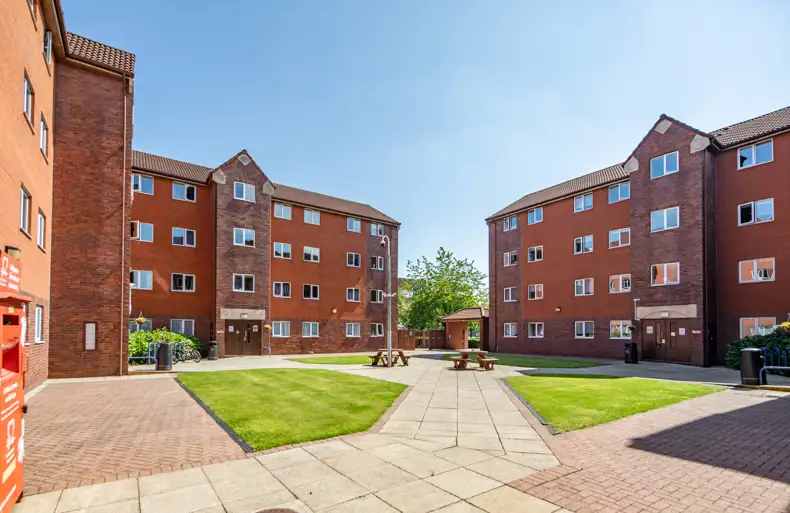Blog | Student Housing | HMO
Student HMOs: learn the tricks to reap the rewards

Whilst attending conferences, watching webinars and reading student housing reports, I cannot help but feel like the houses in multiple occupation (HMOs) sector is misunderstood and frequently overlooked. This omission continues to surprise me considering its wide geographical spread, the scale of investment it attracts and the demonstrable market value it carries.
According to StuRents, 71% of student accommodation (excluding university-owned buildings) is supplied by HMO, equating to 850,000 bed spaces, but the only type of student housing that’s getting mainstream airtime is private built student accommodation (PBSA). HMOs are not considered as glamorous as PBSA. A £35m PBSA deal is likely to gain a lot of media attention, while a bundle of HMOs worth the same is unlikely to generate nearly as much interest, which does not help raise awareness of the state of the market or help potential investors with benchmarking. So how do you get comfortable making a move into the HMO sector in the absence of market information? We suggest starting with research, which should help clear the uncertainty around this often neglected asset class with a lot of potential.

Location factors
The distance to university campuses is often used as a metric which helps determine whether to buy an HMO or not. It is definitely worth taking into account, however, each university town/city is different, and in many instances, it is more important to understand what the most in-demand places for students are regardless of their distance to campus. Often the area in most demand benefits from good amenities – bars, restaurants, cafés, and coffee shops targeting the student demographic. The popular student area of Jesmond in Newcastle, where the centre is a 25-minute walk from Newcastle University, is an excellent example of this.
Market dynamics
Due to councils’ decisions to impose Article 4 Directions, there is now a finite number of HMO properties in each city. Although extensions to existing student houses are allowed, turning a vacant family home into an HMO can be very challenging. Growth in the number of beds (and subsequent competition) is therefore constrained. Trying to understand supply/demand ratios is complicated. You can tip the balance in your favour by getting the location right, but in order to carry out a comprehensive analysis of the student accommodation market, it is essential to consider both HMO and PBSA supply and ‘live-in’ student numbers. Only a data platform such as StuRents would be able to paint this picture for you, providing amongst other things, detailed supply and demand forecasts, as well as behavioural analysis covering various topics. In any event, back your investment by targeting higher education institutions on an upwards trajectory – those with consistently high volumes of applications and students over a period of at least three years. Understanding the university’s demographic can provide an accurate insight into the likely demand for PBSA and HMO.

Policies and regulations
There is no one size fits all approach. Policies and regulations vary depending on the council governing the area where you buy an HMO. One council will request a different sized kitchen and amenity space to another, which means you need to carefully examine local HMO requirements before making a decision.
Rental values
As a rule of thumb, HMOs are at least one step behind the average PBSA in terms of rental value in a given location. However, in reality, students are unlikely to go for a cheaper PBSA room if they want to live in a shared house and vice versa; their choice will be influenced by their vision for the student life they want to experience, regardless of marginal differences in cost. So whilst having a nice buffer between the rental value of a quality shared house and a cluster flat in a PBSA development is comforting and valuable, it is by no means essential. HMOs compete with PBSA for tenants, which is why the two should be getting the same amount of attention within investment circles.
Discount or premium
This will depend on location. For the more sought after locations, discounts were prevalent in portfolio sales, however now we are at a point in time where portfolio sales reflect piecemeal sales, and we may be heading towards a place where premiums are justifiable in the context of HMOs being a finite resource. For less sought-after locations, discounts for portfolios still apply. There are some caveats – understanding the bricks and mortar values as a sense-check is important, but again their significance will also vary by location.

Gross to net assumptions
These depend on many factors: localised efficiencies, using third-party property managers, letting and marketing strategies, service provision, and maintenance. The ‘go-to’ number is 25% excluding the cost of finance but that’s not to say a portfolio running at 15% gross to net is not a true reflection of cost. The question should always be whether this is something you can replicate with your own resources. Buyers will quite rightly want to understand historical and existing OPEX, but in the HMO investment world, you are better off making your own assessment. When it comes to bills, these are often calculated as part of the rental income. Be aware that these fixed costs are generally netted off the gross income before a suitable multiplier is applied.
Competition
Before embarking on an investment, you should consider what the competition is like in your area of interest. If all the local HMOs are of high-specification, could you bring a more budget-friendly option to the market and vice versa? Researching local competition will help you to work out your USPs and enable you to stand out from other HMO offerings. There is a lot to take into account when investing in student HMOs – sometimes it feels like there are just too many moving parts and differentiating factors across the market. But HMOs can be glamorous, they are lucrative (if you get it right!) and most importantly, they will always be popular with UK domiciled students, and so, deserve their place next to PBSA.
Related Insights

Northern Residential Property Transactions 2024 & Market Update
Take a look at the properties we sold in 2024 and read our market updates.

Allsop brings prime Bolton PBSA scheme to market
Uniquely positioned as the University of Bolton’s only approved accommodation for a further 15 years, the scheme presents a c...

Podcast: £100M of auction sales and is it time to diversify into the Student sector?
George Walker, Commercial Auctioneer and Richard Adamson, Residential Auctioneer are also joined in the studio by Anthony Har...

A student landlord’s perspective on The Renters’ Reform Bill
The Renters’ Reform Bill is causing student HMO landlords some concern. The reoccurring conversations we’re having with our c...